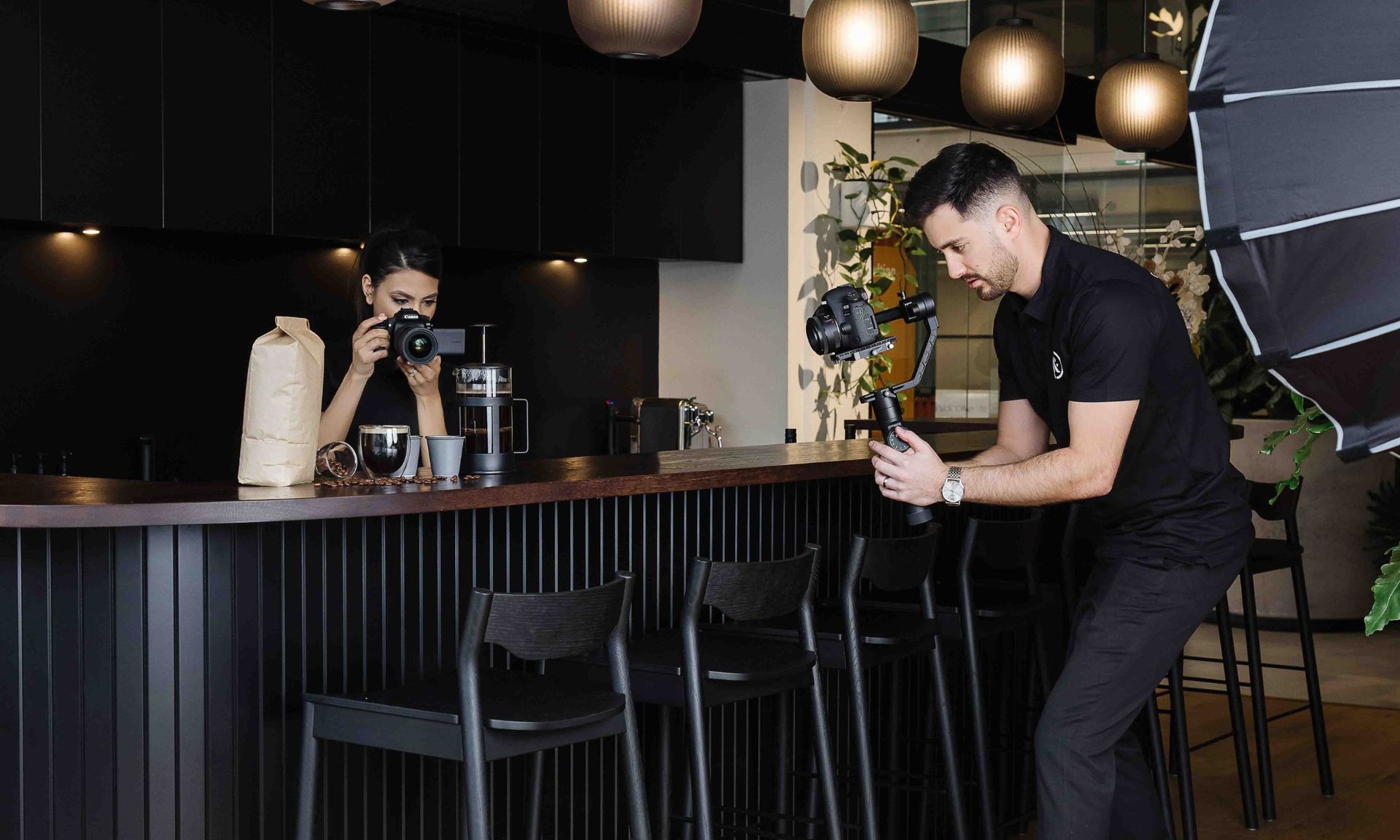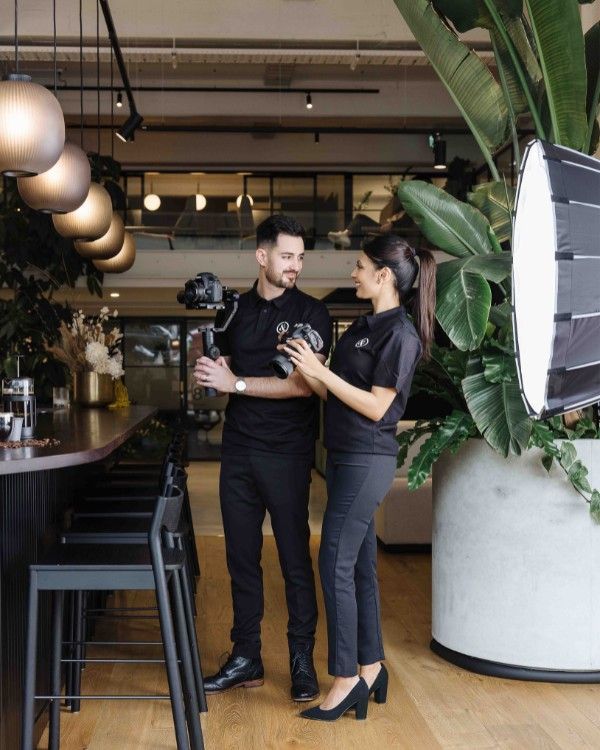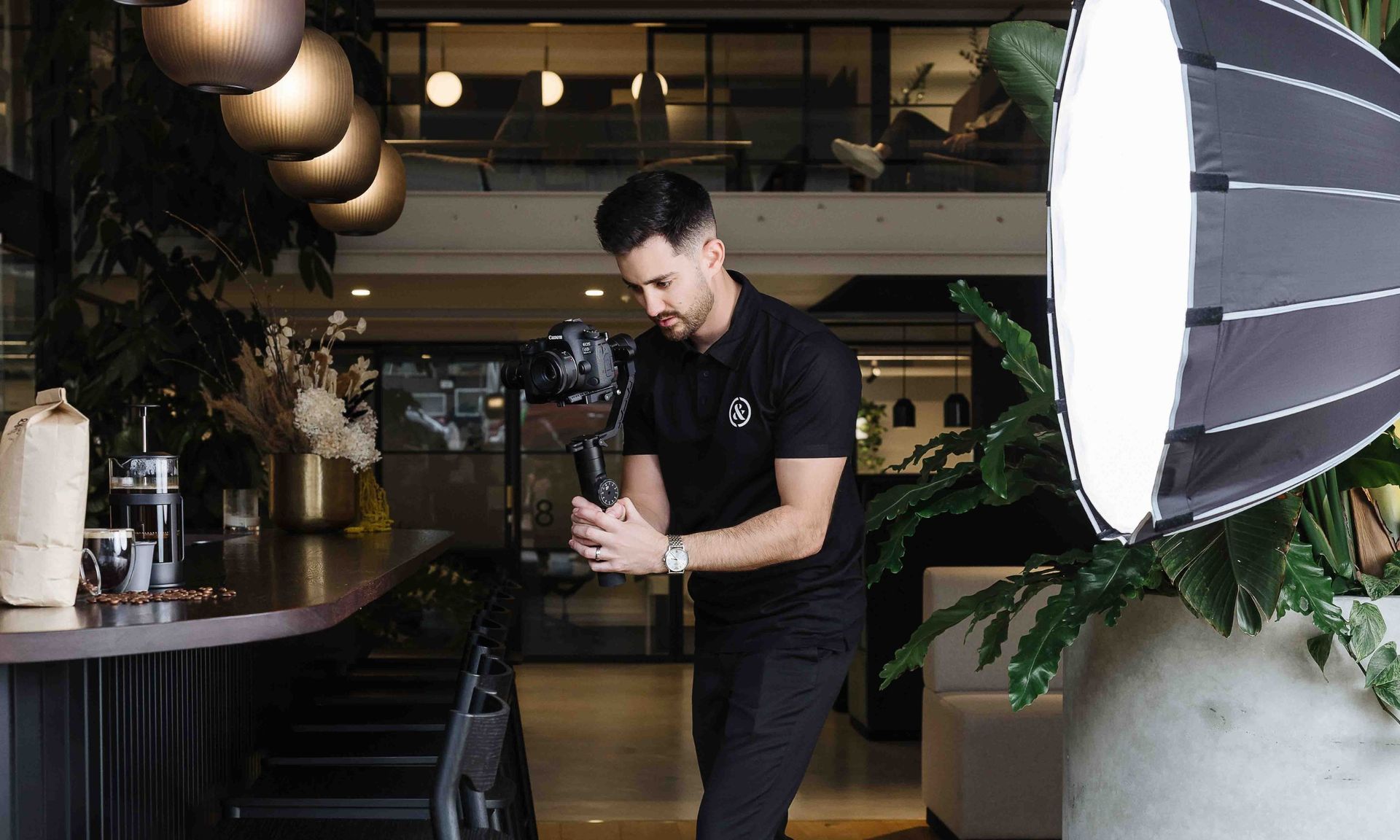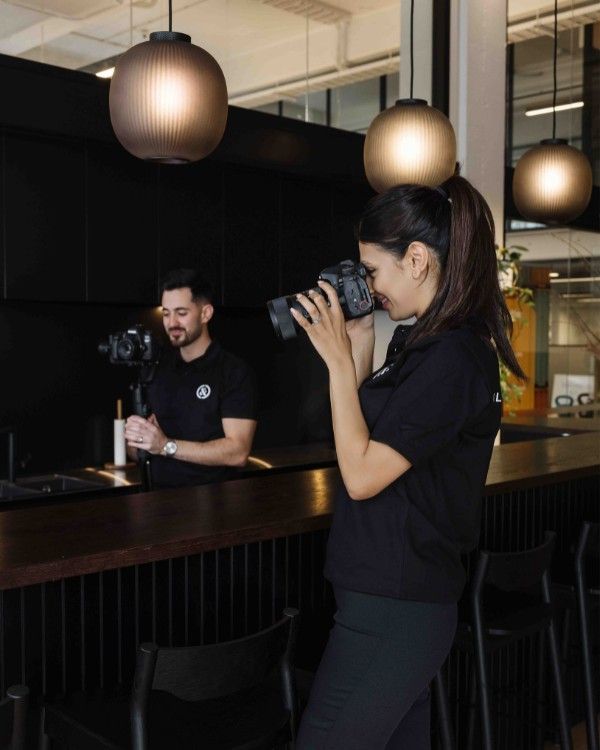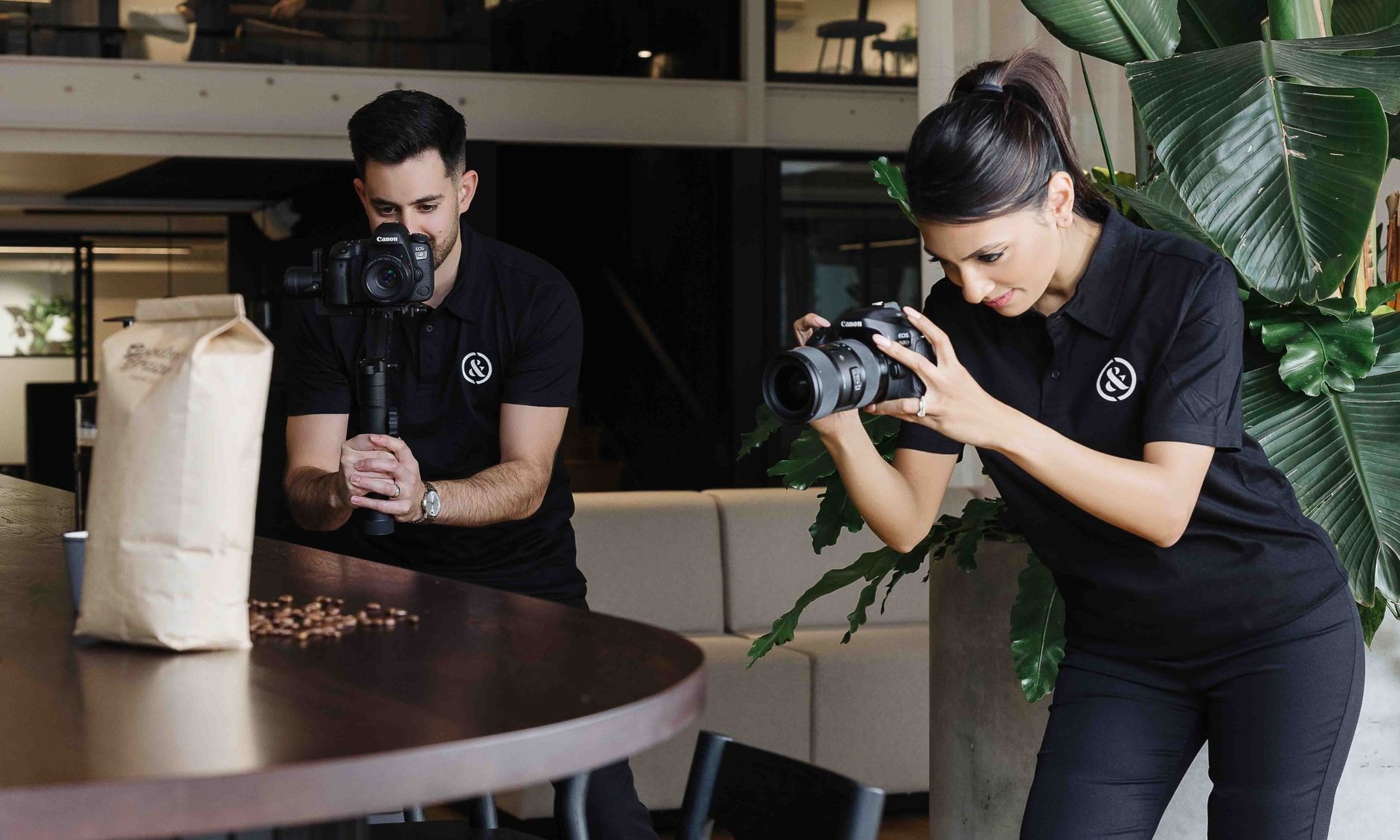Small business brand strategy: How to build a brand that lasts
Small business brand strategy: How to build a brand that lasts
When a small business first enters the market, it faces a major challenge: no one knows who they are or whether they can be trusted. Without history or reputation to rely on, the biggest hurdle is credibility. Customers want to feel confident that the business is reliable and professional before they choose it over more established competitors.
A brand strategy provides that foundation. For a small business, branding includes everything that shapes how people see the business, from visuals to messaging to customer experience - these are all your brand assets. More importantly, it creates the perception of professionalism, builds trust, and establishes a reputation that encourages people to buy. With a clear strategy, an SMB can look established from day one, show that it knows what it is doing, and give customers a reason to believe in it.
This article explores why credibility matters so much for new businesses, how professional branding builds trust, and the steps to creating a small business brand strategy that lasts. Along the way, we’ll connect back to our Small Business Branding Guide, giving you the bigger picture of how strategy, design, storytelling, and branding strategies all come together. We’ll also look at how branding connects with a wider marketing strategy that supports business growth.
ARTICLE CONTENTS
What this article will cover
In the sections that follow, we’ll cover why credibility matters so much for small businesses, how branding creates professionalism and trust, and the role of brand and logo design in shaping reputation. We’ll also look at how small businesses can compete with bigger companies through branding and how to make a brand strategy last for the long term.
Why credibility is everything for small businesses
New businesses start without trust. Learn why credibility is essential and how branding helps you earn it.
Professional branding builds trust and reputation
Discover how a professional identity reassures customers and strengthens your reputation.
Small business vs. big business: Why branding is the difference
See why strong branding allows small businesses to compete with larger, established players.
Why investing in brand and logo design pays off
Understand why design is not only visual appeal, but a credibility tool that drives long-term value.
Making your small business brand strategy last
Explore how consistency, adaptability, and alignment to your brand guidelines keep your brand strong over time.
Why credibility is everything for small businesses
Every new business starts at a disadvantage. Without an established reputation, potential customers have no proof that the business can deliver on its promises. This lack of credibility is often the biggest obstacle small business owners face. Even if their product or service is high quality, people hesitate to buy when they are unsure whether the business is professional or trustworthy.
Credibility comes from how a business presents itself. A clear brand identity and strategy show customers that the business is serious, reliable, and prepared. When a small business looks professional, it reassures people that they are dealing with a capable provider rather than a risky unknown. First impressions carry enormous weight, and for SMBs in particular, branding strategies shape that perception from the very first interaction (Business.govt.nz, 2024).
This is why brand strategy matters so much in the early stages of a business. It helps bridge the gap between being new and being trusted. By defining values, messaging, visual elements, and brand personality that feel cohesive and professional, a small business can prove it knows what it is doing long before word-of-mouth or reviews start to build up. As the Small Business Branding Guide explains, this foundation is what allows strategy, design, and storytelling to work together to build long-term trust and recognition.
Professional branding builds trust and reputation
For a small business, looking professional is one of the strongest assets it can have. Customers may not know the team behind the business or its track record, but they will notice the way it presents itself. A polished logo, consistent visual representations, and clear messaging immediately signal that the business is credible and worth considering. In many cases, professionalism in branding is what makes a customer choose one provider over another.
Trust is built when customers see consistency. If your website design, signage, digital marketing efforts, social media and content marketing all look and feel aligned, it reassures people that you are organised and reliable. On the other hand, inconsistent branding such as mismatched colours, outdated design, or unclear messaging can make a business appear unprepared, even if the service itself is excellent. Professional branding removes that doubt and strengthens reputation over time (Harvard Business Review, 2010).
Reputation grows through repeated positive experiences, but branding accelerates that process by creating the right perception from the start. Customers often associate strong design and cohesive identity with quality and reliability. When your brand looks professional, people are more likely to trust your service before they’ve even tried it. As we outline in the Small Business Branding Guide, investing in branding early is an investment in credibility, brand recognition, and long-term growth. Branding is a huge part of small business marketing, helping to ensure that your reputation can continue to grow consistently across all channels.
Small business vs. big business: why branding is the difference
"A strong brand identity becomes a powerful equaliser."
When people compare a small business to a large, established company, the difference often comes down to branding. Big businesses usually project professionalism through a cohesive visual brand, consistent messaging and a polished presence across every touchpoint. That consistency makes them feel reliable and trustworthy.
Small businesses, on the other hand, often struggle because their branding is either inconsistent or not fully developed. Even if their product or service is excellent, a lack of professional branding can make them appear less credible. Customers tend to assume that a business that looks unfinished may also deliver an unfinished experience.
This gap is where a strong brand identity becomes a powerful equaliser. With a clear identity and brand voice, small businesses can compete on the same level as larger players, presenting themselves with the same level of professionalism and authority. By showing they know their target audience and maintaining consistency across every customer interaction, digital marketing effort and social media platform SMBs can win trust and create a reputation that stands alongside established competitors.
As highlighted in our Small Business Branding Guide, the right strategy helps level the playing field by putting perception and professionalism on your side. Combining this with a well-executed marketing plan ensures that your brand not only competes, but thrives.
Why investing in brand and logo design pays off
For many small businesses, investing in branding and logo design can feel like something to leave until later. In reality, these are powerful tools that establish credibility and trust from the very beginning. Below we explore why your logo and visual identity matter so much, and how they continue to deliver value well beyond first impressions.
A logo sets the standard
A logo is often the very first impression a customer has of a business. When it looks professional, it sets the tone for everything that follows, signalling that the business is established and reliable. It tells potential customers that you take your business seriously, which gives them more confidence to take the next step. It quickly becomes a recognisable marker of your business.
Branding as a credibility tool
A logo is one part of a bigger picture. When it works alongside consistent brand colours, typography, and visual elements, it becomes a credibility tool that reassures customers at every touchpoint. This cohesion shows that the business is organised and confident in what it offers. For a small business without years of reputation behind it, this consistency is key to building early trust.
Perception shapes decisions
Customers make quick judgements based on how a business presents itself. A polished and cohesive identity suggests professionalism and credibility, while a poorly designed or generic logo can create hesitation. Even if the service is excellent, customers may doubt its quality if the brand identity does not reflect the same standard. Strong branding helps remove that doubt and makes the decision to choose you easier.
Long-term value
Branding is an investment that continues to pay off over time. A well-designed logo becomes a recognisable symbol of your business, while consistent branding helps customers remember and return. As your reputation grows, that visual identity becomes linked with reliability and quality in the minds of your audience. Over the long term, this creates loyalty, brand recognition, and word-of-mouth referrals that drive growth.
Ready to build a brand that customers trust?
A professional brand strategy makes your business look credible, consistent, and reliable from day one. Show your customers you are serious about what you do and set the foundation for long-term growth.
Making your small business brand strategy last
Keeping a brand strong over time requires more than an initial plan. Small businesses need to ensure their branding is consistent, adaptable, and aligned across every customer interaction. The following areas show how to build longevity into your brand so that it continues to inspire trust, recognition, and loyalty as your business grows.
Part 2
Adapt without losing identity
Markets and customer needs change, and your brand strategy should have room to adapt the same way that your marketing strategy should. Updating visuals or refining your message is natural as your business grows, but the underlying brand values and brand story should remain the same. This balance of consistency and flexibility ensures you stay relevant without losing credibility.
Consistency builds recognition
Part 1
A brand only becomes powerful when it is applied consistently. Using the same visuals, tone of voice, and messaging across every platform helps customers recognise your business quickly. This familiarity builds trust over time, as people come to associate your brand with reliability.
Part 3
Align every touchpoint
Your brand lives in your logo and your website, yes, but it also really shows up in the way your team communicates, the way your service is delivered, the customer service that you provide, and even how you follow up with customers. When all touchpoints feel aligned, from your marketing materials to customer experience, people experience your brand as trustworthy and professional at every stage.
Measure and refine
A brand strategy should never be set and forgotten. Regularly reviewing how your brand is perceived through market research helps you understand what is working and where improvements are needed. Gathering feedback from your target audience and keeping track of reputation ensures that your brand continues to reflect the professionalism and trustworthiness you want to be known for. Ongoing alignment between your branding and marketing strategy ensures that both evolve together, supporting long-term growth.
Part 4
Conclusion
For a small business, credibility is the foundation of success. Without a reputation to rely on, the way your brand presents itself becomes the deciding factor in whether customers choose you. A strong brand strategy makes you look professional, build trust, and create the perception of reliability that every new business needs. Over time, that professionalism develops into a reputation that brings people back and encourages them to recommend your business to others.
Investing in your brand and logo design is not an optional extra, it is one of the smartest decisions you can make early on. It shapes how people perceive you, sets you apart from competitors, and gives customers the confidence to believe in what you offer. A clear, consistent brand strategy both gets you noticed and ensures you are remembered for the right reasons. Tying this to your wider marketing strategy makes sure your brand continues to grow with clarity and direction.
At Clarke & Clarke, we specialise in helping small businesses create brands that last. If you are ready to build a brand strategy that makes your business look professional, trustworthy, and credible, get in touch with us today to start shaping the reputation your business deserves.
Frequently asked questions
Here are answers to some commonly asked questions.
Why does a small business need a brand strategy?
Without a branding strategy, small businesses risk looking inconsistent and unprofessional. A brand strategy helps create credibility, which is essential for earning trust and attracting customers.
Isn’t a logo enough for my business?
A logo is important, but on its own it cannot build trust. Customers also look for consistency in brand personality, colours, messaging, and the way you communicate whether that be over email marketing, your website or social media platforms. Together, these elements create professionalism and reliability.
How does branding make my business look more professional?
Professional branding shows that your business is organised, prepared, and serious about what it offers. Customers are more likely to trust a business that presents itself consistently across every touchpoint, from social media to printed marketing materials.
Can small businesses really compete with big businesses through branding?
Yes. Strong branding levels the playing field by helping small businesses appear just as professional and credible as larger competitors. With a clear brand story and strategy you can reassure customers that you can deliver the same standard of quality.
What is the long-term value of investing in branding early?
Early investment in branding builds recognition and reputation. Over time, your brand identity becomes linked with reliability, helping you attract repeat customers, strengthen brand recognition, and generate word-of-mouth referrals. Well-documented brand style guide also ensures that consistency lasts as your business grows.




